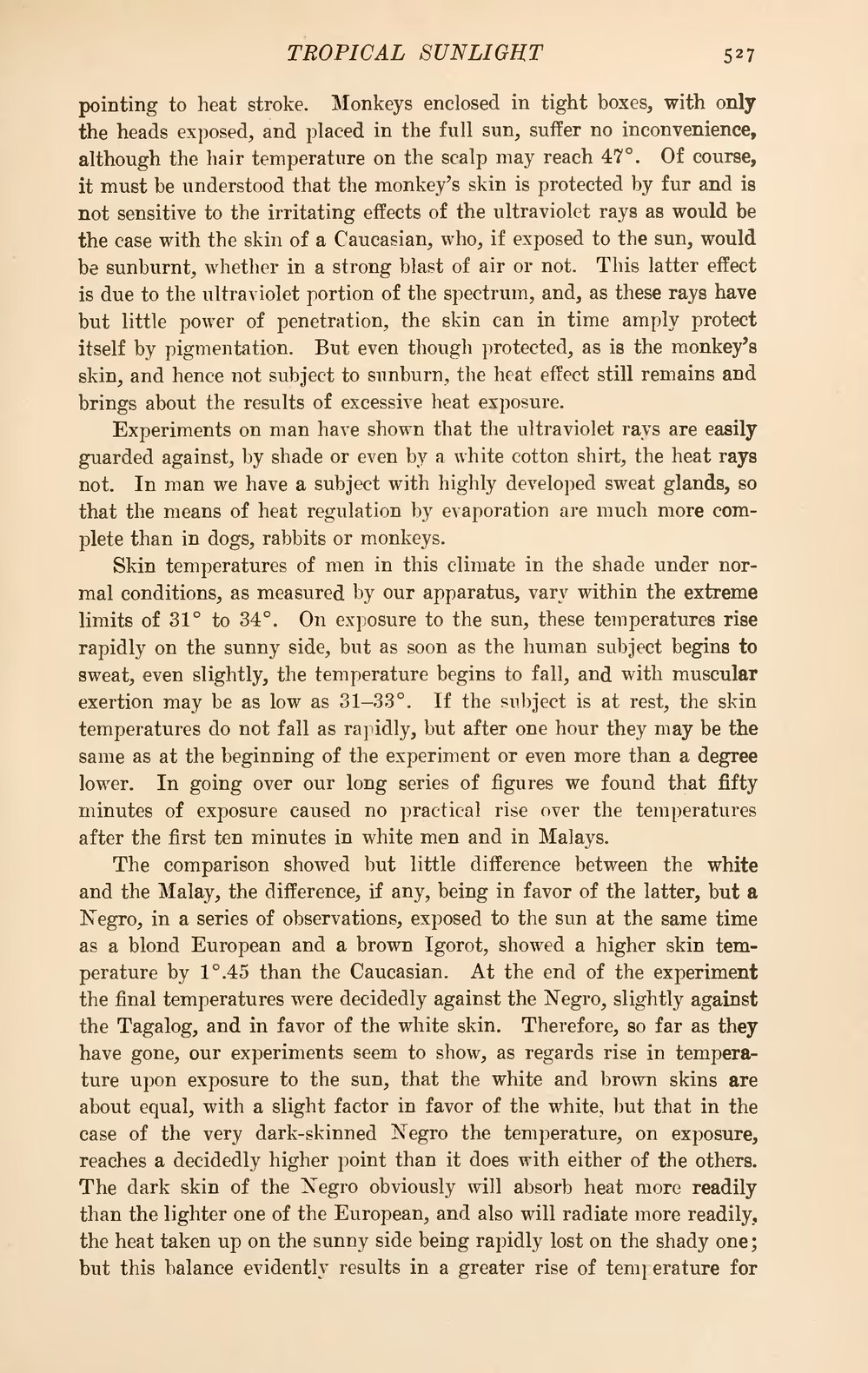pointing to heat stroke. Monkeys enclosed in tight boxes, with only the heads exposed, and placed in the full sun, suffer no inconvenience, although the hair temperature on the scalp may reach 47°. Of course, it must be understood that the monkey's skin is protected by fur and is not sensitive to the irritating effects of the ultraviolet rays as would be the case with the skin of a Caucasian, who, if exposed to the sun, would be sunburnt, whether in a strong blast of air or not. This latter effect is due to the ultraviolet portion of the spectrum, and, as these rays have but little power of penetration, the skin can in time amply protect itself by pigmentation. But even though protected, as is the monkey's skin, and hence not subject to sunburn, the heat effect still remains and brings about the results of excessive heat exposure.
Experiments on man have shown that the ultraviolet rays are easily guarded against, by shade or even by a white cotton shirt, the heat rays not. In man we have a subject with highly developed sweat glands, so that the means of heat regulation by evaporation are much more complete than in dogs, rabbits or monkeys.
Skin temperatures of men in this climate in the shade under normal conditions, as measured by our apparatus, vary within the extreme limits of 31° to 34°. On exposure to the sun, these temperatures rise rapidly on the sunny side, but as soon as the human subject begins to sweat, even slightly, the temperature begins to fall, and with muscular exertion may be as low as 31-33°. If the subject is at rest, the skin temperatures do not fall as rapidly, but after one hour they may be the same as at the beginning of the experiment or even more than a degree lower. In going over our long series of figures we found that fifty minutes of exposure caused no practical rise over the temperatures after the first ten minutes in white men and in Malays.
The comparison showed but little difference between the white and the Malay, the difference, if any, being in favor of the latter, but a Negro, in a series of observations, exposed to the sun at the same time as a blond European and a brown Igorot, showed a higher skin temperature by 1°.45 than the Caucasian. At the end of the experiment the final temperatures were decidedly against the Negro, slightly against the Tagalog, and in favor of the white skin. Therefore, so far as they have gone, our experiments seem to show, as regards rise in temperature upon exposure to the sun, that the white and brown skins are about equal, with a slight factor in favor of the white, but that in the case of the very dark-skinned Negro the temperature, on exposure, reaches a decidedly higher point than it does with either of the others. The dark skin of the Negro obviously will absorb heat more readily than the lighter one of the European, and also will radiate more readily, the heat taken up on the sunny side being rapidly lost on the shady one; but this balance evidently results in a greater rise of temperature for
